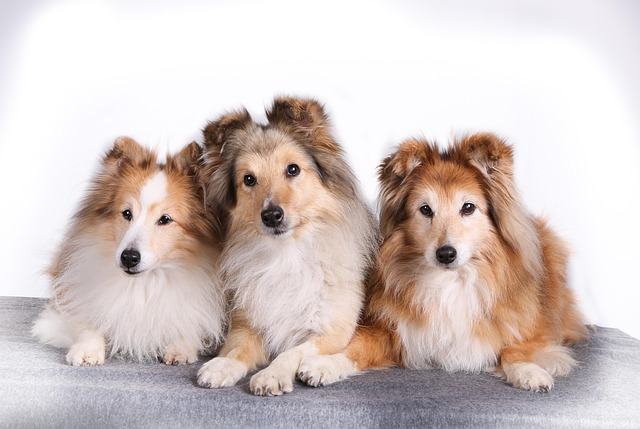
How do i train my dog to be obedient?
Watching your dog dart across the park ignoring your calls isn’t just frustrating—it can put them at risk near busy streets or public spaces.
German Shepherds thrive on structure, but that doesn’t mean rigid routines. These intelligent dogs need training that challenges their minds as much as their bodies, starting from puppyhood when their curiosity is at its peak. Basic commands like “sit,” “stay,” and “come” lay the foundation, but don’t stop there—they crave tasks that make them feel useful, whether it’s fetching the mail or helping with household chores.
Socialization is non-negotiable, especially in neighborhoods where encounters with other pets and children are common. Exposing them to different sounds, sights, and people early on helps prevent skittishness or overprotectiveness. Local parks with designated dog areas are great spots, but always keep them leashed unless in fully fenced, off-leash zones—many regions have strict laws about unrestrained dogs in public spaces.
Obedience training should evolve with age. Adolescent German Shepherds often test boundaries, so consistent reinforcement of rules matters. Use positive reinforcement like treats or praise; harsh corrections can damage their trust. Remember, many communities require dogs to respond to voice commands in public, so practicing “heel” during walks isn’t just good manners—it’s often a legal requirement.
 Physical exercise pairs with mental stimulation to keep these energetic dogs balanced. Long walks, agility courses, or even scent-tracking games work wonders. A bored German Shepherd might turn to chewing furniture or digging, which can lead to complaints from neighbors. Check local regulations on backyard fencing—some areas mandate specific heights to prevent escapes, ensuring your dog stays safe and avoids roaming into restricted areas.
Physical exercise pairs with mental stimulation to keep these energetic dogs balanced. Long walks, agility courses, or even scent-tracking games work wonders. A bored German Shepherd might turn to chewing furniture or digging, which can lead to complaints from neighbors. Check local regulations on backyard fencing—some areas mandate specific heights to prevent escapes, ensuring your dog stays safe and avoids roaming into restricted areas.
Leash training deserves special attention. Their strength means a pulling dog can be difficult to control, risking accidents. Invest time in teaching loose-leash walking, not just for your comfort but to comply with laws that require dogs to be under control in public. Many cities fine owners whose dogs cause disturbances or injuries due to poor leash behavior.
Training should also address their protective instincts. While this trait makes them excellent watchdogs, it can cross into overreaction if not managed. Teaching them to distinguish between normal activity and genuine threats helps keep interactions with delivery workers, visitors, or strangers smooth. In some places, dogs that display aggressive behavior may face restrictions or require specialized training certifications.
Consistency from all family members is key. If one person allows jumping on the couch while another discourages it, confusion sets in. Establish clear rules—like no begging at the dinner table or designated sleeping areas—and stick to them. This consistency helps your German Shepherd feel secure, reducing anxiety that might manifest as unwanted behaviors.
As they mature, advanced training can tap into their natural talents. Many excel in service work, search and rescue, or even therapy roles. Local training clubs often offer classes that align with breed-specific needs, and attending these can also help you connect with other owners who understand the unique joys and challenges of raising a German Shepherd.
Always keep updated on local laws regarding dog training and ownership. Some areas require proof of basic obedience training for certain breeds, and failure to comply might result in fines or restrictions. Additionally, registering your dog with local authorities and ensuring they’re microchipped isn’t just responsible—it’s often legally mandated, making it easier to reunite if they ever get lost.
German Shepherds aren’t just pets; they’re partners. The time you invest in their training builds a bond that lasts a lifetime. When they respond reliably to your commands, respect boundaries, and interact calmly with the world around them, they become not just well-behaved companions but ambassadors for responsible dog ownership in your community.

Watching your dog dart across the park ignoring your calls isn’t just frustrating—it can put them at risk near busy streets or public spaces.

New puppy owners often find themselves rushing to clean up accidents before they set in, and that’s where puppy pad training becomes a game-changer.

If you've noticed your dog's waistline disappearing and your veterinarian has mentioned those few extra pounds, your first instinct might be to simply reduce the amount of food in their bowl.

Training a dog to use a designated spot indoors isn’t as daunting as many new owners fear, but it does take consistency and an understanding of your pet’s needs.

That moment of dread on a walk is all too familiar for many new dog owners. You see another dog approaching down the sidewalk of your neighborhood

If the sight of another dog on your neighborhood walk makes your heart sink as your own dog erupts into a frenzy of barking and lunging, you're not alone.